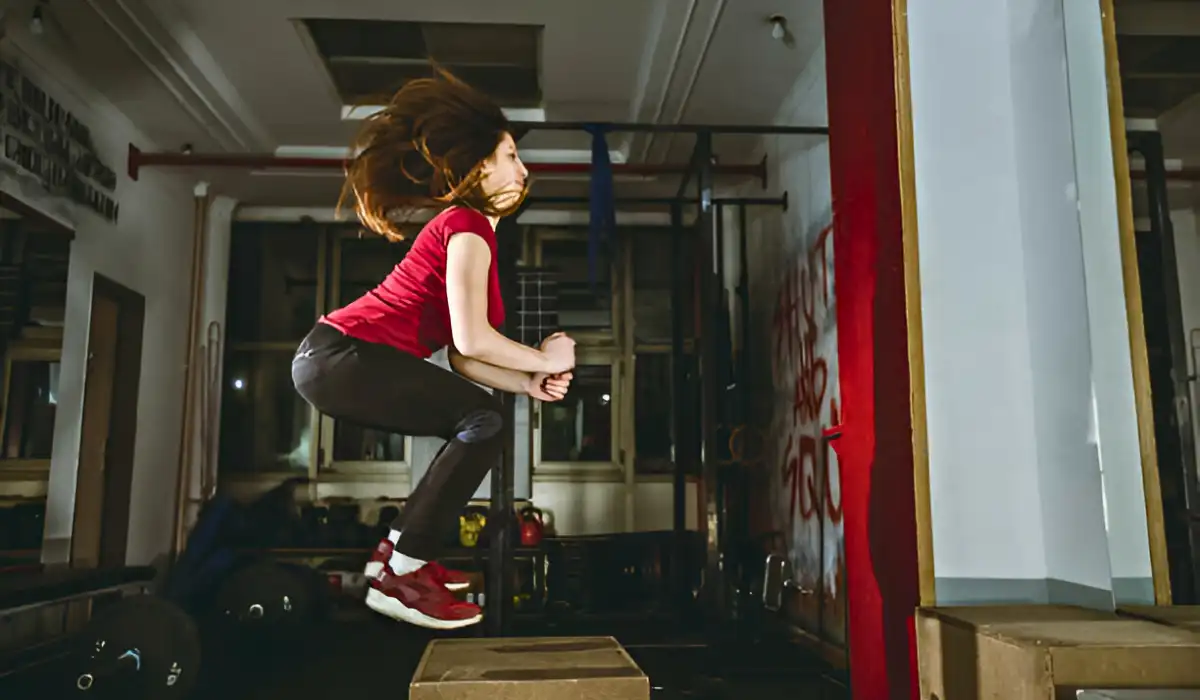Box jumps are flexible workouts that increase endurance, leg strength, and power. It is a fantastic bodyweight workout that helps with lower body explosiveness, which is useful in a variety of sports.
Olympic weightlifting, CrossFit, and several sports-specific strength and conditioning regimens employ it. However, it might not be a great choice for someone new to the fitness industry or who suffers from injury or pain. To balance this loss, there are several low-impact box jump alternatives.
What Makes A Good Box Jump Alternative?
The box leap involves jumping quickly and landing in a squat or half-squat on a higher surface, like a plyo box. This calls for a rapid extension through the ankles, knees, and hips, followed by a rapid bending through the same joints upon landing.

The glutes, hip adductors, quadriceps, and calves are the primary muscle groups used in a box jump. The quads work to straighten the knees, the glutes and hip adductors to straighten the hips, and the calves to straighten the ankles. Therefore, a good box jump alternative should activate the lower body musculature, as all the major lower body muscle groups are engaged in a box jump.
To improve explosiveness, a good box jump alternative should be performed quickly. The goal of the box jump workout is to exert as much energy as possible. Additionally, the box jump is a low-intensity workout. Performing at maximum effort while maintaining low intensity will help to improve the explosiveness in the lower body.
The 5 Best Box Jump Exercises
1. Squat Thrusts
Squat thrusts are a no-equipment box jump alternative. It can be performed faster or slower, depending on the ability of the person. Working on the legs, arms, and core, squat thrusts help to work on speed and power.
➡ Techniques for performing squat thrusts
Start in a stretched-out plank stance and jump with the legs close to the chest. Next, drive the legs to get into a standing position.
2. Step-ups
Step-ups, the non-polymetric version of the box jump, are a good alternative for people with bad knees. This exercise is performed using a steeper. The height of the steeper can vary depending on the comfort of the person.
➡ Techniques to perform step-ups
Place the left foot in front of the stepper and step on it. Step down on the floor by pushing with the left leg to raise the torso, and stand on top of the stepper. Then, step back with the right leg. Repeat the exercise on both legs.
3. Lunges
All the muscles of the legs and the core will be engaged while performing lunges. This exercise is suitable for people with injuries as they lack jumping, resulting in less force on the knees. However, the lack of jumping reduces the effect on the development of speed and power.
➡ Techniques to perform lunges
While maintaining an engaged core, step forward with one leg and bend the knee to execute a lunge down. To return to a standing position, push through that leg and repeat with the other leg. Repeat the exercise.
4. Thrusters
Thrusters are a CrossFit exercise that helps to increase the strength of the legs, core, and arms. Increasing the speed of this exercise will help to develop speed and power.
➡ Techniques to perform thrusters
A barbell or two dumbbells can be used to hold the weights at chest level. After lowering yourself to a squat, push through the legs to stand up, extend the arms, and lift the weights above the head.
5. Stair Climbing
When done fast, climbing stairs can be a good substitute for box jumps because it strengthens the upper body, glutes, legs, and core muscles while being less physically taxing than leaping on a box. Any accessible stairs, either at home or outdoors, can be used for this exercise.
➡ Techniques for performing stair climbing
Start by placing one foot on the first step while standing at the bottom of the stairs. To raise the heart rate, quickly ascend the steps while keeping the arms bent at the sides, the core tight, and the body slightly slanted forward.
One can also experiment with other alternatives, such as facing sideways up the stairs or taking one foot on every other step. To assist you in maintaining proper posture, it’s important to keep your body upright and your core active. It is important to keep the body upright and the core active to assist in maintaining proper posture.
Conclusion
Plyometric exercises like box jumps primarily target the muscles in the legs and core. They involve quick muscular contractions and extension movements, such as skipping and hopping, to complete an exercise. These workouts aid in the development of power, strength, speed, and endurance.
Individuals who have weak or sore knees should not execute box jumps. This exercise may also be difficult for inexperienced trainers to perform effectively; thus, other low-impact options might be a better fit to get comparable effects.
There are plenty of low-impact box jump alternatives that can be performed by people depending on their fitness ability and health conditions. While certain box jump substitutes can be completed at home with just one’s body weight, some might need access to certain equipment.







